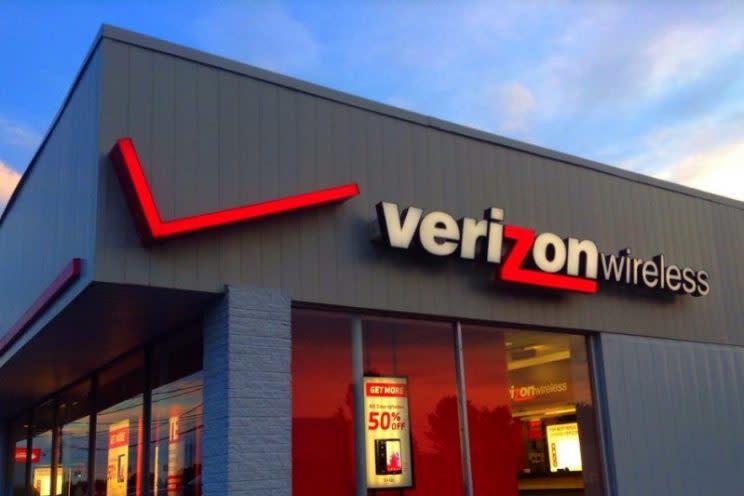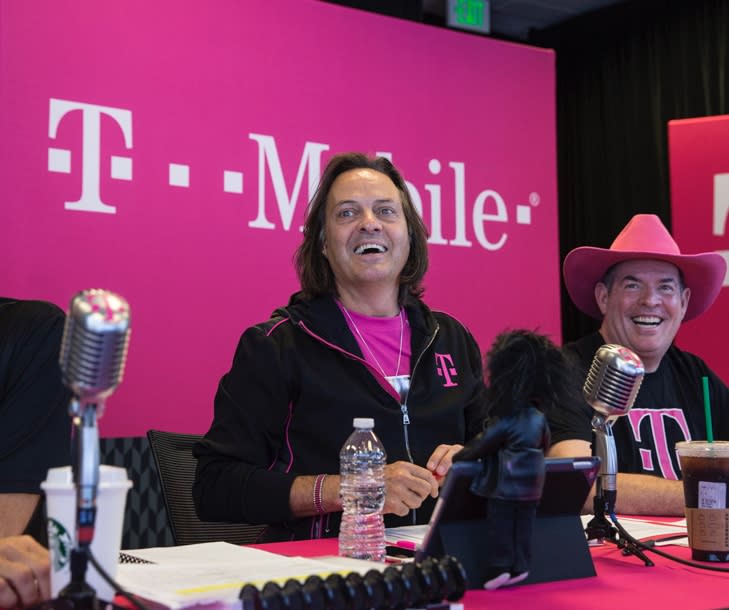How Verizon's new 'unlimited' plan compares to the competition

Some five and a half years after killing its unlimited-data plan, Verizon (VZ) is resurrecting the offering, putting the carrier back on an even footing with competitors like AT&T, Sprint and T-Mobile.
The move, announced Sunday, completes a remarkable turnaround for the industry. Back in mid-2012, only Sprint (S) offered a plan with unlimited full-speed data, which, given its horrible network then, wasn’t too appealing anyway. But in August 2012, T-Mobile (TMUS) added an unlimited plan to its stable of offerings. In January, AT&T (T) brought back unlimited data for its subscription-TV customers. And now Big Red has joined the trend.
Verizon’s plan is actually a solid deal thanks to its unlimited high-definition video streaming and 10 GB of data for Wi-Fi tethering. But it’s also one of the most expensive options. Here’s how Verizon’s unlimited plan compares to the competition’s.
Prices and prioritization
Verizon’s Unlimited offering can actually be considered “unmetered,” as it does have some limitations. But that’s also the case with the unlimited-data deals from each of the three other nationwide carriers.
And the severity of the restrictions on each so-called unlimited plan often has little do with how much more or less it costs next to competitors’ plans — a lineup in which Sprint is cheapest, followed by T-Mobile, then Verizon and finally AT&T.
Here’s how the plans shake out:
AT&T (reserved for DirecTV and U-verse TV subscribers): $100 per month for one line, $40 per month each for the second and third lines. The fourth line is free.
Sprint: Sign up now through March 31, 2017 and you’ll pay $50 per month for one line, $40 for the second and nothing for the third and fourth lines through March 31, 2018. After that you’ll pay $60 a month for one line, $40 for a second and $30 each for the third and fourth. If you sign up after March 31, 2017, you’ll pay the standard $60 a month for the first line, $40 for the second line and $30 each for the third and fourth lines.
T-Mobile: $70 per month for one line, $60 for the second line and $20 each for the third and fourth lines.
Verizon: $80 per month for one line, $60 for the second, $22 for a third and $18 for a fourth.
The most obvious limit is the point at which your data speeds slow if your carrier’s network becomes congested. This doesn’t mean getting kicked back to 2G speeds — the fallback, unmetered data service AT&T, Sprint and Verizon provide on their limited plans — but could mean slower webpages and poor streaming quality. It’s hard to say how much this could impact you, though, as user reports about the severity of this “deprioritization” have varied widely.
AT&T and Verizon will start to deprioritize your date after you use 22 GB in a month, while Sprint sets its limit at 23 GB. T-Mobile says ranking among the top 3% of its users, which the carrier says equates to burning more than 28 GB a month, will see your data fall to a lower priority level.
Other caveats: hotspots, high-def video
What about using your phone as a Wi-Fi hotspot, otherwise known as tethering? AT&T’s unlimited plan bans that, while Sprint limits it to 5GB a month. Verizon, meanwhile, includes 10 GB of LTE tethering and drops you down to 3G speeds once that’s depleted. As of Monday morning, T-Mobile offered unlimited tethering but at painfully slow 3G speeds; that afternoon, it reversed course and said it would include 10 GB of full-speed tethering starting Feb. 17.
Video also faces limits on most of these plans. While Verizon offers unlimited high-definition video streaming, Sprint and AT&T constrain streaming to 480p resolution, or DVD quality. AT&T lets you opt out of this “Stream Saver” feature to watch movies at a higher resolution. Sprint (which also limits music streaming to 500 kilobits per second and gaming to 2 megabits per second) charges $20 extra per line for an “Unlimited Premium” plan that enables high-definition video and quadruples music and gaming speed limits.
T-Mobile’s Monday switcheroo also ended the carrier’s policy of limiting streaming video to 480p resolution. You’ll be able to get higher resolution streams starting Feb. 17. If you’re already on the carrier’s T-Mobile One unlimited plan, you’ll also be able to switch to this upgraded version Feb. 17.

T-Mobile and Verizon also specify that you must enable automatic payments on your account to get the advertised pricing for their plans, while Sprint requires that you use paperless billing. If you’re fond of mailing back a check each month, look elsewhere.
Your alternatives
Whether these mostly-unlimited options work for you depends not on how much data you use, but on how you use it.
If you regularly use your phone as a hotspot, AT&T is out of the question while T-Mobile and Verizon clearly beat Sprint. If, however, mobile video dominates your data use and you watch on larger-screen devices, T-Mobile and Verizon’s support for HD streaming and AT&T letting you turn off Stream Saver may count in their favor.
Some of these plans include bonus features that may help tip the decision for you. AT&T, T-Mobile and Verizon, for example, include free roaming in Canada and Mexico. T-Mo also sweeps taxes and fees into its unlimited plan’s advertised price, unlike the other three carriers.
What about the old, unlimited-data plans AT&T and Verizon yanked off their sites a few years ago?
In Verizon’s case, you should almost certainly drop it: That old plan’s combined price for unlimited data, 450 voice minutes and only 250 text messages — tethering excluded — now stands at $95 after a $20 increase imposed on those grandfathered subscribers.
At AT&T, stand pat. The old unlimited-data option, combined with 400 minutes of calling and 200 texts, will cost $85 after a $5 price hike next month. Both old and new unlimited deals block tethering.
Either way, check your bill to see just how much data you use — the answer might mean the limited plans at AT&T, Sprint and Verizon suit you better. (Note that VzW’s listed prices for 2 GB, 4 GB and 8 GB plans exclude a $20 per month line-access charge factored into its $80 advertised unlimited-data rate.) Buying more data than you use, subject to conditions you’re more likely to notice, is not bandwidth management but an unprofitable form of psychological self-care.
Disclosure: Verizon is in the process of buying Yahoo Finance’s parent company, Yahoo.
More from Rob:
FTC’s case against Vizio illuminates terrible tech industry habit
Malware study shows people still falling for old tricks, but there’s hope
Study finds most people are scarred of being hacked, but don’t do much about it
Email Rob at rob@robpegoraro.com; follow him on Twitter at @robpegoraro.


